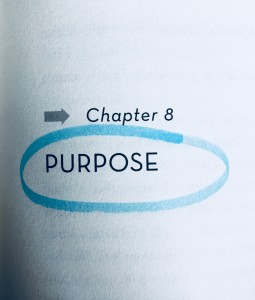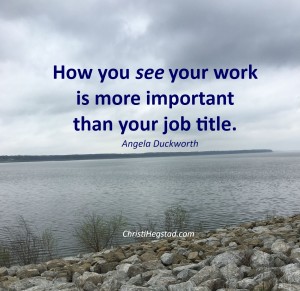Enthusiasm is common. Endurance is rare. ~ Angela Duckworth
How’s your stick-to-it-iveness?
When you set your sights on a meaningful goal, how well do you persevere – especially when the going gets tough?
How gritty are you, really?
Turns out your grit level may be a bigger factor in your success, life + job satisfaction, and overall wellbeing than you ever realized, according to research by Dr. Angela Duckworth. More than talent, more than skill, grit – which combines passion and perseverance – can be the ingredient that changes everything.
I watched Duckworth’s TED Talk years ago but only recently read her book, Grit. Honestly, Grit is one of the two best books I have read this year (The Book Of Joy is the other).
I have been weaving my takeaways from Grit into my work with coaching clients, as Duckworth offers numerous practical strategies for building grit, breaking down goals for greater success, and powerfully connecting grit with such concepts as hope, mindset, and kaizen or continuous improvement. Her findings can make an immediate and profound impact; I know simply reading the book reinvigorated my own commitment toward my goals!
But what I’d like to share here in the blog is the link between grit and my focus area, purpose. “At its core,” Duckworth writes, “purpose is the idea that what we do matters to people other than ourselves.” She devotes an entire chapter to purpose, and I’ll admit I highlighted nearly the entire chapter.

Purpose serves as an incredibly powerful source of motivation. “Whatever your age,” Duckworth writes, “it’s never too early or late to begin cultivating a sense of purpose.” She offers numerous evidence-based ideas and closes the chapter with three recommendations from prominent purpose researchers:
#1: Reflect on how the work in which you’re already engaged makes – or can make – a positive contribution to society, suggests David Yeager.
#2: Think of ways you can alter the work you do to increase its connection to your core values, offers Amy Wrzesniewski.
#3: Find a purposeful role model to inspire you, says Bill Damon.

“How you see your work is more important than your job title,” Duckworth states. “And this means that you can go from job to career to calling – all without changing your occupation.” I’ve witnessed this time and again with coaching clients; you can read about one such example of a “desk jockey” turned life-saver here.
While I believe this book can benefit everyone, I highly recommend it for leaders, parents (Chapter 10 is titled to “Parenting for Grit”), teachers, coaches, and anyone dedicated to the growth and development of others. You will also benefit from reading Grit if you need a boost in motivation toward your own goals and dreams.
Want to see where you fall on Duckworth’s grit scale? Click here – then follow up by reading the book!





